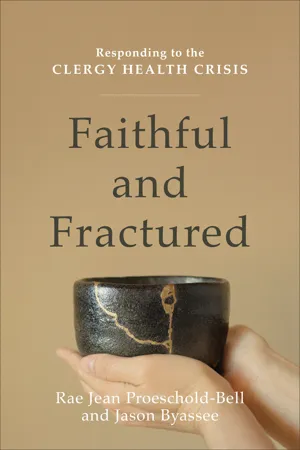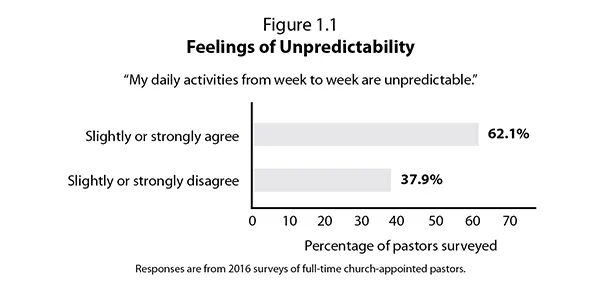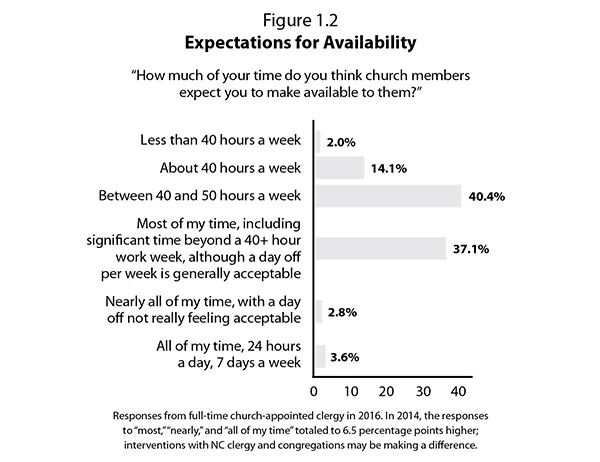
eBook - ePub
Faithful and Fractured
Responding to the Clergy Health Crisis
- 224 pages
- English
- ePUB (mobile friendly)
- Available on iOS & Android
eBook - ePub
About this book
Clergy suffer from certain health issues at a rate higher than the general population. Why are pastors in such poor health? And what can be done to help them step into the abundant life God desires for them?
Although anecdotal observations about poor clergy health abound, concrete data from multiple sources supporting this claim hasn't been made accessible--until now. Duke's Clergy Health Initiative (CHI), a major, decade-long research project, provides a true picture of the clergy health crisis over time and demonstrates that improving the health of pastors is possible. Bringing together the best in social science and medical research, this book quantifies the poor health of clergy with theological engagement. Although the study focused on United Methodist ministers, the authors interpret CHI's groundbreaking data for a broad ecumenical readership. In addition to physical health, the book examines mental health and spiritual well-being, and suggests that increasing positive mental health may prevent future physical and mental health problems for clergy. Concrete suggestions tailored to clergy are woven throughout the book.
Although anecdotal observations about poor clergy health abound, concrete data from multiple sources supporting this claim hasn't been made accessible--until now. Duke's Clergy Health Initiative (CHI), a major, decade-long research project, provides a true picture of the clergy health crisis over time and demonstrates that improving the health of pastors is possible. Bringing together the best in social science and medical research, this book quantifies the poor health of clergy with theological engagement. Although the study focused on United Methodist ministers, the authors interpret CHI's groundbreaking data for a broad ecumenical readership. In addition to physical health, the book examines mental health and spiritual well-being, and suggests that increasing positive mental health may prevent future physical and mental health problems for clergy. Concrete suggestions tailored to clergy are woven throughout the book.
Frequently asked questions
Yes, you can cancel anytime from the Subscription tab in your account settings on the Perlego website. Your subscription will stay active until the end of your current billing period. Learn how to cancel your subscription.
At the moment all of our mobile-responsive ePub books are available to download via the app. Most of our PDFs are also available to download and we're working on making the final remaining ones downloadable now. Learn more here.
Perlego offers two plans: Essential and Complete
- Essential is ideal for learners and professionals who enjoy exploring a wide range of subjects. Access the Essential Library with 800,000+ trusted titles and best-sellers across business, personal growth, and the humanities. Includes unlimited reading time and Standard Read Aloud voice.
- Complete: Perfect for advanced learners and researchers needing full, unrestricted access. Unlock 1.4M+ books across hundreds of subjects, including academic and specialized titles. The Complete Plan also includes advanced features like Premium Read Aloud and Research Assistant.
We are an online textbook subscription service, where you can get access to an entire online library for less than the price of a single book per month. With over 1 million books across 1000+ topics, we’ve got you covered! Learn more here.
Look out for the read-aloud symbol on your next book to see if you can listen to it. The read-aloud tool reads text aloud for you, highlighting the text as it is being read. You can pause it, speed it up and slow it down. Learn more here.
Yes! You can use the Perlego app on both iOS or Android devices to read anytime, anywhere — even offline. Perfect for commutes or when you’re on the go.
Please note we cannot support devices running on iOS 13 and Android 7 or earlier. Learn more about using the app.
Please note we cannot support devices running on iOS 13 and Android 7 or earlier. Learn more about using the app.
Yes, you can access Faithful and Fractured by Rae Jean Proeschold-Bell,Jason Byassee in PDF and/or ePUB format, as well as other popular books in Theology & Religion & Christian Church. We have over one million books available in our catalogue for you to explore.
Information
1
Creatures Doing the Creator’s Work
Twelve-hour workday. Three committee meetings. One breakfast meeting and one lunch meeting. Working with the Music Director to tweak the sound system in the Fellowship Hall for Sunday youth worship. Working with the Associate Pastor on Confirmation Sunday plans. At least three dozen emails and one dozen phone calls. Various conversations with folks about new members, revamped websites, capital campaigns, session retreats, NEXT Church, Sunday school classes and one member who asked how my family is adjusting to the move.
Honestly, I get to do this for a living. How awesome is that?
Steven Lindsley, Facebook post (May 7, 2014)
Ah, a day in the life of a pastor. Despite public perception, pastors do so much more than write and deliver Sunday’s sermon. You likely know this already, or else you wouldn’t have picked up this book. However, it’s worth taking a minute to examine the content of a pastor’s day, beyond its essential busyness.
The day is long. This particular pastor is writing a Facebook post during his first weeks at a new church, at the end of a twelve-hour workday (and you have to wonder, is posting about ministry life essentially doing more work?). This pastor broke bread while working, with both breakfast and lunch occurring during work meetings. It’s unclear whether he ever got a break during the day or was able to have dinner with his family, but let’s hope that he did.1 The one dozen phone calls suggest frequent interruptions and a lot of work with people. Working with the associate pastor suggests a supervisory relationship, indicating that this pastor needs to have managerial and delegation skills. But perhaps most notable is the range of activities that fall within a single day, from attracting new members to raising money to communicating using the web to—almost laughably—tweaking the sound system!
This pastor spent his day moving from one different task to another, quite likely at a pace set by others, with interruptions, and with little opportunity to see a particular project or decision through to completion. This pastor also drew on diverse skill sets throughout the day. Studies have shown that toggling between tasks that involve different skill sets can result in a particular kind of stressor termed “task switching.” In fact, toggling from task to task can be harder on someone than doing the same very stressful task all day—because the very act of changing gears costs mental resources and can slow a person down and lead to errors.2

This pastor had a very long day. He did not mention driving, but pastors who serve in rural areas often make long drives in order to do things like visit parishioners in hospitals. Also, this pastor did not mention preparing his sermon for Sunday, but I’m sure he thought about it and maybe even worried about it. As we heard in one clergy focus group, “Sunday always comes right on time”—even if you’re not ready for it!
For this pastor, this particular day did not involve any crises, but it is quite in the nature of clergy work to require adjustment and readjustment as new priorities arise. Sometimes these new priorities mean performing a funeral during a full week when Sunday’s sermon isn’t ready yet. Other times, new priorities can come in the form of parishioners in crisis. Studies have shown that, among people in the United States seeking help for a serious mental illness, nearly a quarter approach clergy as their first line of professional support.3
Even though this pastor’s day was lengthy, long hours in and of themselves do not seem to be a problem for the mental health of clergy. The weeks of Advent that lead into Christmas and the observances during Holy Week, leading into Easter, may be among the busiest times of the year for pastors, but pastors see work during those seasons as essential—core to their calling—and because they carry such great meaning, those times of the year are not the most stressful for clergy. In fact, in looking at our survey data, there was no relationship between the number of hours worked per week and depression or anxiety. Working long hours when one is energized in ministry is not necessarily a problem.
What does seem to be a problem is when pastors feel like they can’t ever take a break from ministry work or when they feel guilty for not doing enough.4 Our survey data give us an idea of how common these pressures are among clergy. Pastors working in poor areas, whether rural or urban, face extra pressure from the economic stagnation, resource-deprived schools, and lack of hope for the future experienced by their parishioners. The gospel message works well in such circumstances, but the toll on pastors is real.
Consider also the numerous meetings each week for things like spiritual growth or building and maintaining the church. The pastor cannot possibly organize and attend all the events, and doing so might in fact undermine the church by undercutting the feeling of ownership of the members. Churches rely on parishioners—who are essentially unpaid volunteers—to conduct much of this work.5 The pastor has to notice who is good at what and develop the skills of volunteers. And the number of volunteers needed can be numerous: volunteers for the finance committee, building maintenance, hospitality events, childcare, helping the pastor develop a vision for the church, and many other tasks. In one focus group I led, a second-career pastor who used to work for a large company emphasized how hard it is to lead volunteers and, more generally, to work within the organizational structure of the United Methodist Church.
In many small churches, there’s a lot of stress. I came out of working in a company with a $7-million-dollar budget and a number of people that I was in charge of, and I did not have the pressure and stress that’s on me in the ministry of three churches. You just have a control in industry that you don’t have [in ministry]. If you had a disruptive individual that wasn’t a team player, you could fire him! Your CEO . . . was readily down the hall and available for discussion about problems. Now, he’s in Raleigh and he’s not available. Your district managers are tied up in paperwork and everything else and not able to come to the churches or to the locations where you need them to help relieve that stress.

Pastors must be good leaders on small and large levels. They demonstrate leadership on a smaller level when they identify talented parishioners and work with them, and they demonstrate leadership on a larger level in where they choose to put their—and the church’s—energy. On both levels, pastors are highly visible, and their work and actions (even those unrelated to work) are often judged.6

Behind the Pulpit
Rent-Free Living
Rent-Free Living
Folks in the recovery community sometimes give out this sage advice: Don’t let anyone live in your head rent-free. If they’re not adding value to your life, kick them out of your thoughts. I wish it were that easy.
I got to know Beth early in my time as head pastor. Her presence brings to mind a different saying, this one from out on the Canadian prairie: be wary of whoever meets you at the train. That is, the first person welcoming you to the stop on the prairie is there for a reason. He or she wants something from you or is alienated from the rest of the community and wants to get to you first. So it was with Beth. She had great energy for starting ministries, had a heart for reaching the community, and came to worship like she was hooked up to a homing beacon. She was cheerful when she saw me, and when she hugged me, she smelled good—like being-close-to-grandma good.
Till she quit showing up for anything. A friend saw her and asked where she’d been: “I just can’t do it right now,” Beth said. Then I started hearing things from her friends. “Beth says you only care about the younger people.” “Beth says you’ve wrecked her Sunday school class.” “Beth says you’re out of town too much.” I was tempted to turn this last complaint around on her: “If you think I’m gone too much, you must like it when I’m here!” But logic was not what Beth was after. She was after hurtful story lines that could undermine me. That the story lines were mutually contradictory didn’t matter any more than it matters for attack narratives in partisan politics. Folks eventually assume that where there’s smoke there’s fire. And Beth made plenty of smoke.
I tried going to her directly. We’d have a friendly visit, but no behavior change resulted. I tried sending notes. Sometimes these received thanks but no behavioral alteration. I tried asking her friends what was eating her. “Beth just gets that way,” they said. But then I started wondering about these friends. Why were they listening to her? Why were they passing on these critiques if there wasn’t a shred of truth in them?
Then the really damaging accusations started to fly. “Beth says your salary is x.” The figure was some 60 percent more than I actually made. I wanted to reply, “I thought making money was no crime in this country,” or, “I plan to make that one day, when I deserve it,” but I didn’t. I just said that Beth didn’t know what she was talking about. And I told the askers what I actually made. In Methodist land you can find our salaries with a few clicks of a mouse. These salaries are public for reasons of accountability and history, and they have always been. In my case, as one of the higher paid people in the conference, this should h...
Table of contents
- Cover
- Title Page
- Copyright Page
- Endorsements
- Dedication
- Contents
- Illustrations
- Tables
- Preface
- 1. Creatures Doing the Creator’s Work
- 2. When Work Is Holy
- 3. Slowed Down and Overwhelmed
- 4. A Practical Guide to Combating Stress Symptoms
- 5. The Pastor’s Paradox
- 6. Feeling Alive
- 7. Clergy Flourishing
- 8. The Lord Bless You and Keep You
- Acknowledgments
- Appendix: Recommendations for Clergy Health Programs
- Bibliography
- Index
- Back Cover